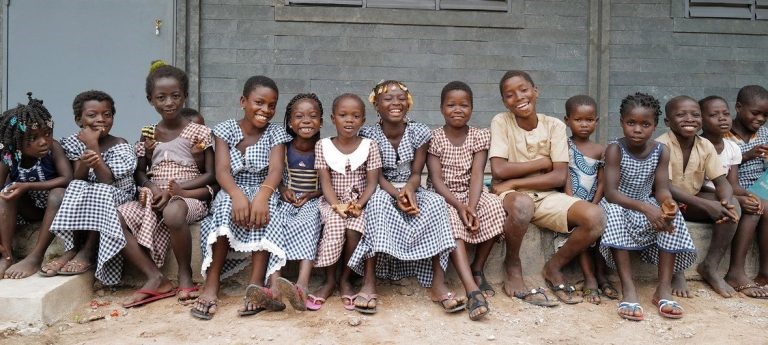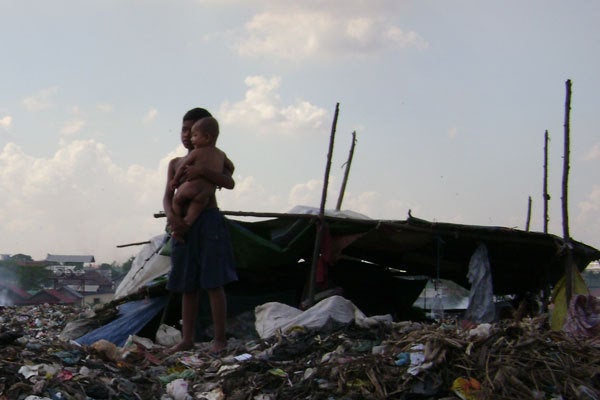
The mission of Orphans International Worldwide, which began as “Raising Global Leaders,” has now expanded. Today our mission statement has evolved… into “Ending Orphanages Globally.”

The mission of Orphans International Worldwide, which began as “Raising Global Leaders,” has now expanded. Today our mission statement has evolved through ten years of experience coupled with a continued vision into “Ending Orphanages Globally.” An ambitious goal.
This was my announcement at the Orphans International Worldwide Congress IV held at N.Y.U. Medical School in October 2008, featuring some of the best minds in the international field of orphan care, including:
- Dr. Donald Hoskins, president of the Board of Directors of Orphans International America, and the cornerstone of our organization;
- The Congress’ moderator, Dr. Harriet Katz, who moderated our last panel at the United Nations on Global Warming;
- Dr. Sonia Ehrlich Sachs, whose work on the Millennium Village Project I have been following avidly for years;
- Dr. Jane Aronson, America’s foremost expert on conditions of adoptive children in the developing world;
- Dr. Emmanuel d’Harcourt, from the International Rescue Committee, which outfitted our health clinic in Indonesia after the 2004 Tsunami;
- Both Dr. Richard Alderslade, Chief Executive of the Children’s High Level Group; and Corinne Woods, HIV/AIDS Section of UNICEF
- Dear friend and mentor, Peter Yarrow of Peter, Paul & Mary, famed singer and social activist.
The Congress had several eye opening panels, including “Challenges of Child Survival in Africa,” “Life in the Orphanage: How Children Are Affected by Institutionalization,” “Children’s Health in Fragile States: Challenges and Ways Forward,” “Witnessing the Effects of Agent Orange on Vietnamese Children, Three Generations Later,” “Improving Services for Children in Eastern Europe,” and “The Global Challenges of Children with HIV/AIDS.”
The Congress ended with a panel on “Interning at OIW: A Firsthand Perspective.” Our unusual interns become senior interns, then sub-committee chairs, and eventually Advisory Board members. There is a reason for this progression: Satisfaction, not guaranteed, is obtainable through dedication.
In 1998, I began to dedicate my life and our organization to developing a small home alternative to traditional orphanage “warehouses,” where staff rotated in shifts and children had no constant adult to bond with. I fully dedicated myself to this cause when I left Wall Street after the Tsunami of 2004.
My adopted son Mathew — who I met in 1995 when he was ten months old — attended our World Congress at N.Y.U. Medical School — now a teenager and a testimony that we can make a difference to the lives of children in the developing world.
Our children in Haiti and Indonesia, as well as Tanzania and Sri Lanka, are raised according to “Mathew’s Rule” — that we treat the children in our care the way in which we would treat our own children. Since the start — at the end of the last century — we have been “Raising Global Leaders,” and Mathew is as global as they come. Yet much has changed over the last thirteen years since I first met Mathew.
Ten years later, with sixteen million AIDS orphans in Sub-Saharan Africa alone, and with a global economic meltdown bouncing from Indianapolis, Hamburg and Singapore to Indonesia, Haiti and Sri Lanka. My original model needs to be strengthened.
We cannot house all of the children orphaned by disease, disaster and economic collapse. Yet we have come to realize that nearly every orphan in the developing world can be housed through existing homes, through existing families.
I am excited at this moment in time to introduce Family Care — providing the mechanisms needed to house orphans in their own extended families. And to announce an End to Orphanages Globally, by 2050.
The OIW Family Care Model, developed by a team led by Toni Cela, applies the simple concept of “kinship care” — supporting extended family members’ ability to provide temporary or permanent care for orphaned children.
According to the United Nations, UNICEF, and Save the Children:
• The number of orphans worldwide is estimated at 210 million, rapidly increasing due to the AIDS epidemic, natural disasters, low world health standards, immense poverty, and food shortages made worse now by our global financial collapse.
Some countries are more in need than others. Here are three that Orphans International are in: Haiti is the poorest nation in the Western Hemisphere, with severe impacts on child health and well-being. Today, 70% of the Haitian population lives on less than $1 per day.
• Daily food insecurity affects 40% of households. One-fourth of all Haitian children suffer from malnutrition.
• In addition, 40% of the population has no access to basic healthcare.
• Per capita health spending — both public and private — averages $21, compared with an average of $281 for all of Latin America.
Indonesia faces even more economic and structural insecurity. A tragic 52% of Indonesians live below the poverty line, on less than $2 per day. The malnutrition rate is 28% for children under the age of five.
• Nearly 25% of the population does not have access to safe drinking water.
• Although nearly 95% of the school age population is enrolled in primary school that number plummets to just over 55% for secondary school enrollment.
Tanzania is ranked one of the world’s poorest countries. Tanzania has one of the lowest rates of secondary school enrollment in the entire world.
• 85% of children are enrolled in primary school; however 20% of these children drop out of primary school before graduation and only 5% go on to secondary school.
• Tanzania’s annual per capital income is $390. With 40% of its people in Tanzania living in chronic food deficit regions due to irregular rainfall. Of children under five years old, 38% are chronically malnourished and 30% of the total population is malnourished.
• Malaria is the leading killer of children in Tanzania. The mortality rate for children under 5 years old is 118 for every 1,000 births. The life expectancy for a child born in Tanzania today is 52 years.
These cold, abstract numbers hide unimaginable misery which only adds to the desperation of orphaned children in the developing world.
Orphans International is open today in Indonesia, Sri Lanka, Haiti, and Tanzania, beginning to move children into the homes of their own homes.
We are on the ground and ready to move forward in many other countries stretched across three continents: the Philippines in Asia & the Pacific, Ghana in West Africa, and the Dominican Republic in the Caribbean and South America.
Orphans International Family Care focuses on three primary objectives:
- Education — providing for tuition, uniforms, and materials, as well as access to Internet-connected computer labs;
- Health Care — providing health clinic services on-site; and
- Nutrition — providing food assistance and nutritional education.
Research shows what your heart already knows — that “kinship,” or family-care, results in better social, emotional, educational, and health outcomes for the child‘s well-being than institutional care. At our next Congress, medical, educational, and social professionals will elaborate.
The OI Family Care model, in contrast to institutional orphanages, strengthens the social and emotional network of the child by connecting him or her to family, friends, neighbors, and the community. You will be hearing more from those with doctorates from Columbia, Harvard, and N.Y.U.
Orphans placed in kinship care — in OIW Family Care — are also able to maintain their linguistic, cultural, religious, and family traditions. The Family Care model also offers more security and stability for the child, and usually helps keep the child in their same community and school, requiring less government intervention.
We will save the science of “kinship care” for our next Congress. It is enough to say: these relationships are conduits for the transmission of knowledge and culture. They are essential to successful transition into independent living as an adult.
This is an ambitious goal, yet I believe it is achievable. I dedicate myself and my organization to use these relationship to End Orphanages Globally by 2050.
With the assistance of our supporters — interns, volunteers, committee members or chairs, Board members, staff, or colleagues — we can together end the sorry lot of the world’s “orphan warehouses.” We can give each and every orphaned child back to a family who will raise them as we would raise our own — with hope and dignity and love. We can make a place at the table for all the children of the world.
Originally published in The Huffington Post, June 28, 2009.